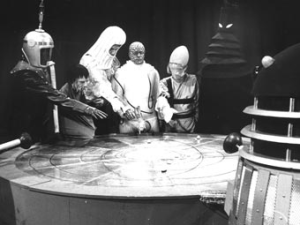
If there’s one thing fans treasure, it’s the memories that their favorite franchises helped them develop. Science fiction is a metaphor for the human condition, and those memories have the power to develop fans into caring and productive members of society starting at childhood. It’s understandable how placing those personality building blocks into another creator’s hands can inspire immediate feelings of revulsion and fear, but it’s far less understandable how a reboot or reimagining is comparable to a violent personal violation.

Let’s presume for the moment that fans actually mean what they say in this case. Rape is a serious crime, and not simply through the books of law. Rape is a physical, mental, and emotional assault that has long-reaching effects in the victim’s life. Rape is a personal violation and an exercise of absolute power over the powerless.
The statistics on sexual assault are staggering. In the United States, another person is sexually assaulted every two minutes. One in six women are victims, as are one in thirty-three men. Sixty percent of sexual assaults are not reported to authorities, and a staggering ninety-seven percent of rapists will never spend a single day in jail for their crimes. Rape victims are three times more likely to suffer from depression, six times more likely to suffer from post-traumatic stress disorder (PTSD, the same disorder found in war veterans), and are four times more likely to contemplate suicide. The effects are so long-reaching that survivors of sexual assault who see references to rape are viscerally reminded of being helpless and powerless and completely at the mercy of a hostile (and often well-known or trusted) force.
There are cases of childhoods that were lived and survived around rape and incest. Those are real lives affected by real crimes, not the pettiness of a bad adaptation of a favorite Saturday morning cartoon. Using rape terminology to describe the latest attempts by Michael Bay, Will Ferrell, George Lucas, or J.J. Abrams to do their jobs trivializes the traumas of real rape victims, as if voluntarily watching the new Teenage Mutant Ninja Turtles adaptation matches in any way with being sexually assaulted.
Using rape terminology to describe feelings over a cherished franchise being revisited is disgusting and insensitive.
Next, let’s presume that when these fans say “rape,” they really mean “ruin.”
We live in an era of geek renaissance. Between the cultural awakening in the mainstream with The Big Bang Theory (one of the most popular panels at conventions) and the financial success of the Marvel Cinematic Universe, geek culture is being catered to with a golden tea set. It’s a digital era dominated by rebirth of cherished franchises once thought dead. Almost anything fans could want to revisit exists on physical or digital media, including BitTorrent. Linked childhood memories are only a click or two away.
Unless the evil creative of choice has a time machine (or fandom are collectively taking mind-altering drugs), both the memories and source material are safe. Quite honestly, the concern behind “ruining” a franchise or childhood memories is a hollow first-world problem dominated by a sense of narcissism and a false sense of ownership over entertainment productions.
As fans, we aren’t owed anything by creators. Hollywood and other entertainment venues are businesses, first and foremost, and those businesses have no contracts to make things exactly the way we want. Entertainment must appeal to the general audience first in order to earn a decent return on investment. If you don’t believe me, take a look at the domestic performances behind Pacific Rim, Sucker Punch, and Watchmen, all of which were niche films designed to attract genre fans and failed to meet their budgets.
Producers, writers, and directors have one job in their fields, and that is to make a generally accepted entertainment product that sells well. To that end, fans are consumers and nothing more, and are not even required to take in entertainment they don’t want to see. Everyone has the freedom to skip entertainment choices that don’t appeal to them.
The argument that modern creatives are ruining properties or memories is a false one. If childhood memories could be destroyed by a lackluster adaptation or vision, there are deeper problems with that childhood than entertainment choices. In that case, I recommend seeking help.
The worst part about either of the arguments about childhood memories being defiled is they both contribute to toxic cultural atmospheres. Both claims infer a personal assault, an act that never truly occurs against any of us, and transform a community based on enjoying, analyzing, and celebrating entertainment and its deeper meanings into a group of pessimists and cynics who tend to find the negative in every minute of film and paragraph of news.
The rape claims do even worse damage by trivializing the horrors of sexual assault and enhancing a culture that uses sexual assault as a punchline. In a community that decries racism, homophobia, and bullying, and is constantly haunted by the stigma of pedophilia and sexism, it is odd that we would so easily laugh off rape.
Science fiction and fantasy often speak of the need for tolerance and open-mindedness, and it is possible for genre fans to be critical of favorite properties without casting themselves as the victims in a fanciful morality play. Modern storytellers won’t have to destroy our childhoods because we are the ones betraying the lessons we claim to have learned.
Our community needs to return to the spirit of acceptance beneath the banner of celebration and wonder, and it needs to stop suffering from prejudice against new perspectives and ideas. We need to stop destroying ourselves in a misguided effort to protect ourselves. Only then will we truly have upheld the legacies of our childhoods.








